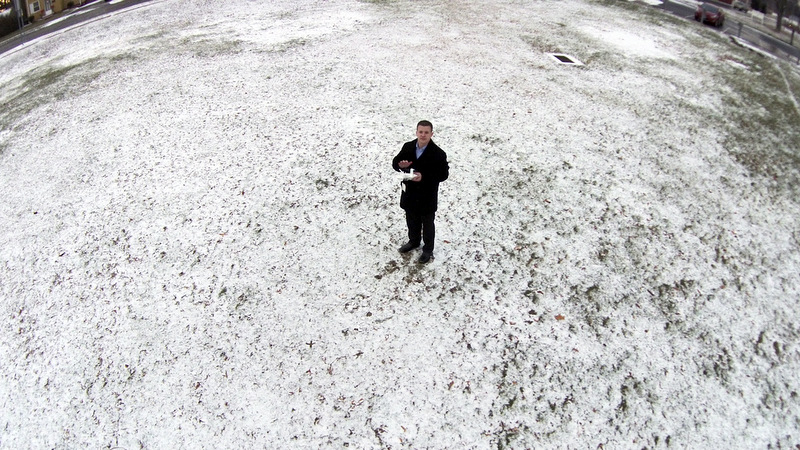
David Beesmer was arrested by a New York state trooper on Tuesday and charged with a felony — unlawful surveillance in the second degree — for recording aerial video footage of the Mid Hudson Medical Group building in Ulster, New York, which just opened last Monday.
Beesmer was in the area because he had taken his mother to a doctor’s appointment at the hospital. He posted on Facebook that he wanted to fly his aerial drone in the area because he was “so very proud of this facility and that someone has done something positive with the property that has been abandoned for many years.”
But since Beesmer was reportedly flying his $1,300 drone between 10 and 15 feet from the windows of examination rooms at the medical facility — close enough for patients and medical staff to notice it — his use of the equipment became an issue.
According to New York state law, an individual is prohibited from using a camera to view or record people who are dressing or undressing themselves in a place where they have a reasonable expectation of privacy, such as bedrooms, changing rooms, restrooms and hotels, or to record underneath the clothing of a person to view or record “sexual or other intimate parts of such person.”
As Beesmer has proven with the aerial footage he recorded, the facility’s tinted windows ensured that he would not be recording anyone inside the building, and in the police report, the arresting officer never claimed that Beesmer was trying to record patients who may have been undressing. The only claim police made was that Beesmer was recording the building.
Beesmer reportedly didn’t film anything that would be prohibited from being recorded under Ney York’s “peeping Tom” law, but was still arrested. Beesmer has since been released from jail, but was asked to appear in court on a later date.
“I truly realize that I should have asked first but did not think it would be an issue….only to discover that it sure is,” Beesmer posted on Facebook.
“I will not stop droning….this is the wave of the future…and I WILL be a part of it,” he concluded.
Though many see his case as a relatively simple one, there is a concern among some police reform groups that law enforcement often acts too quickly to take unmanned aerial vehicles down, as police officers don’t often like being filmed or recorded while on duty, although the practice is completely legal.
In addition to Beesmer’s recent arrest, the New York City Police Department arrested two people — Remy Castro and Wilkins Mendoza — on felony endangerment charges for allegedly flying a DJI Phantom in the path of a NYPD helicopter pilot, who allegedly had to veer off course to avoid being struck by the drone.
But according to air traffic control recordings, the NYPD pilot not only saw the drone flying near the George Washington Bridge, but chose to fly the helicopter at the UAV instead of around it. Castro told the New York Daily News that the drone recordings also prove that the two men were not following the NYPD helicopter, but that the helicopter was following the drone.
“He’s endangering our lives and himself by following us,” Jonathan Castro, Remy Castro’s brother, told the Daily News. “He’s wasting taxpayers’ money following a little drone. He’s wasting taxpayers’ money. It’s not our fault. It’s not illegal.”
Andrew Meyer covers unmanned aerial vehicle photography stories for the website Photography Is Not A Crime. He says the fact that Beesmer, Castro and Mendoza’s videos served as proof of their innocence will hopefully help police officers understand that “aerial photography is not [necessarily] a crime.”
Meyer also recommended that prosecutors in these cases pursue “a more accurate charge — and prosecute the arresting officers who filed a false police report,” as Beesmer notes that at least in his case, the police report filed by the arresting officer didn’t match the report filed by the fire chief or what is seen and heard in the recording.

